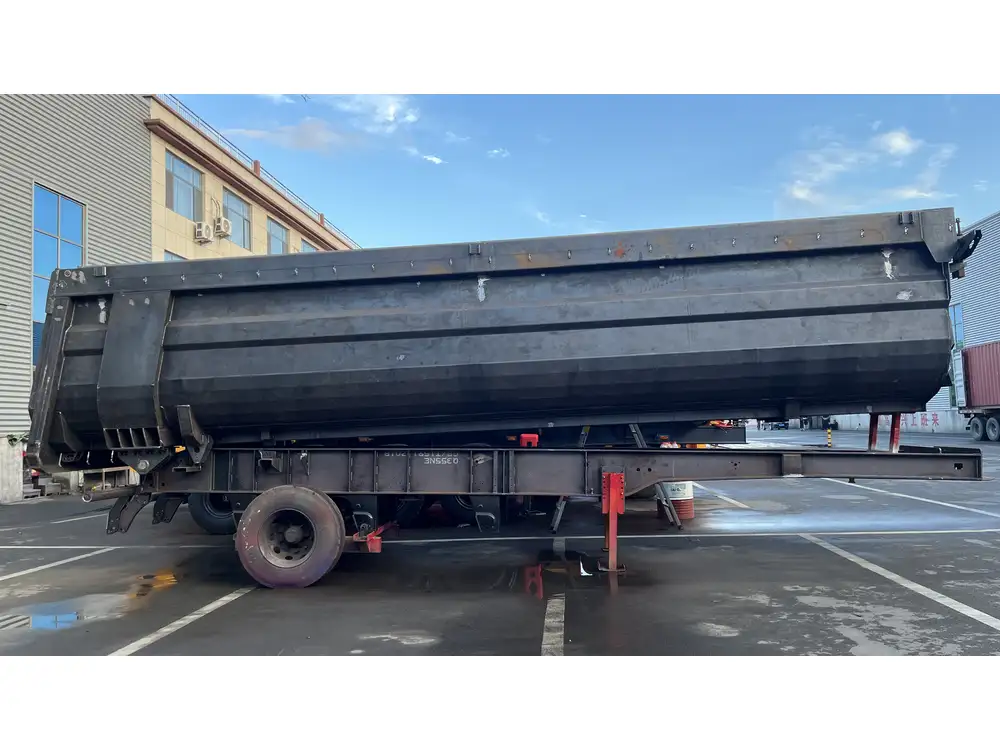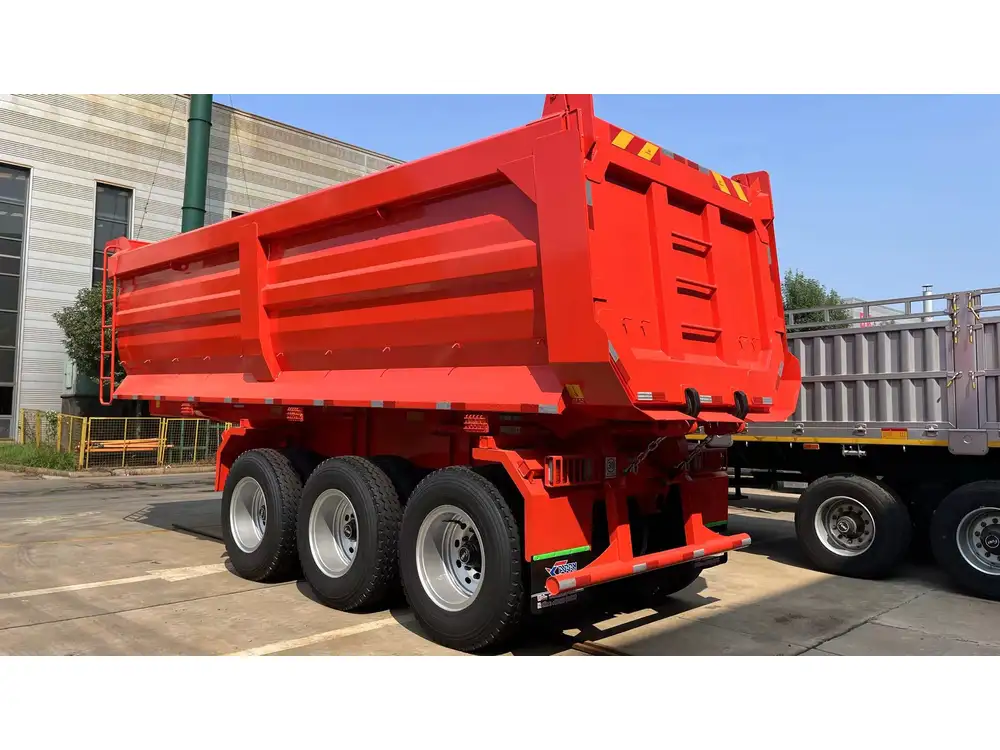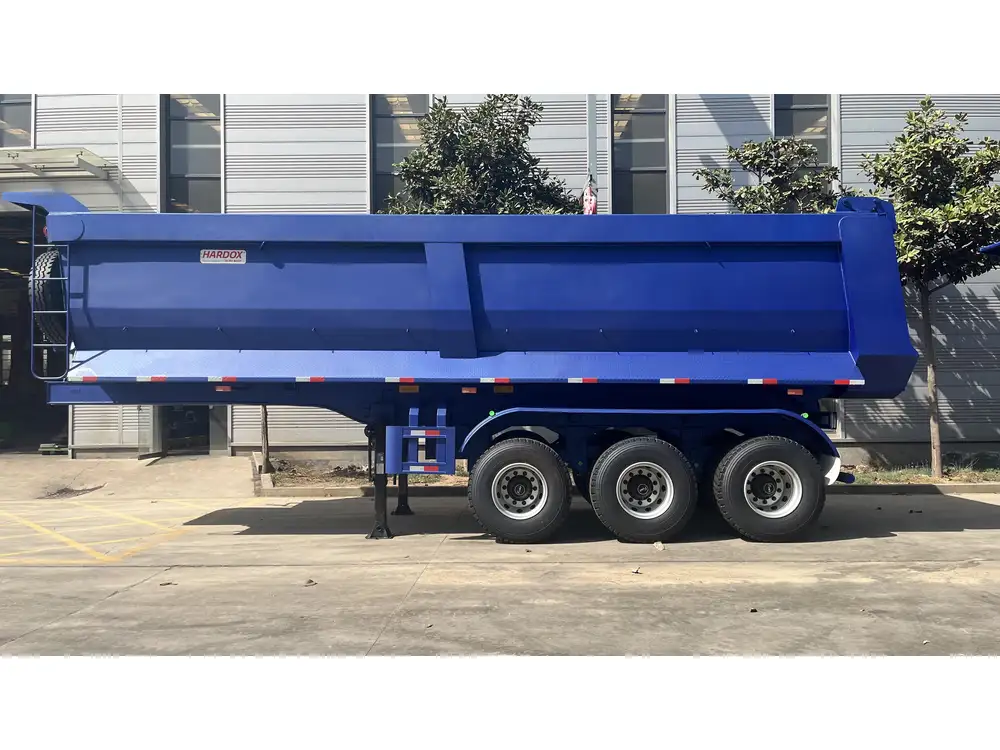Building a flatbed trailer is a marvelous project that requires precise planning, quality materials, and attention to detail. Whether you aim to produce a trailer for commercial transportation, construction use, or specialized cargo handling, understanding the structures and best practices will set your product apart. This comprehensive guide will delve into each stage of construction, providing insights to enhance your manufacturing process effectively.
Understanding the Fundamentals of Flatbed Trailers
What is a Flatbed Trailer?
A flatbed trailer, characterized by its level, open deck without sides or a roof, is designed for transporting various goods. Its versatility enables users to load heavy equipment, bulky cargo, and oversized materials with ease, making it a preferred choice in agriculture, construction, and transportation industries.

Key Features of Flatbed Trailers
| Feature | Description |
|---|---|
| Frame Construction | Robust steel or aluminum frames that ensure durability and capacity for heavy loads. |
| Decking Materials | Wooden planks, steel, or aluminum surfaces that provide a stable loading area. |
| Axles and Suspension | A well-designed axle system contributes to load distribution and overall stability. |
| Towing Mechanism | Compatibility with various hitch types to accommodate different towing vehicles. |
| Weight Rating | The trailer’s capacity to safely carry specified loads without structural failure. |
Types of Flatbed Trailers
- Standard Flatbed Trailers: Common in transporting conventional loads.
- Lowboy Trailers: Designed to carry heavy, oversized loads while maintaining a low profile.
- Step Deck Trailers: Combines a flat deck with a lower level to accommodate taller loads.
- Extendable Flatbed Trailers: Can extend in length to handle longer cargo.
Planning Your Flatbed Trailer Build

Setting Your Objectives
Establishing the purpose of your flatbed trailer is crucial. Consider the following points:
- Intended Cargo: Different loads generally require different specifications.
- Dimensions: What size trailer will accommodate your cargo most effectively?
- Weight Capacity: What is the maximum load you anticipate transporting?
Material Selection
Choosing the right materials will significantly affect the trailer’s performance and longevity. Here are some options:
| Material | Pros | Cons |
|---|---|---|
| Steel | High strength, durability, cost-effective | Heavier, susceptible to rust |
| Aluminum | Lightweight, corrosion-resistant, aesthetic appeal | More expensive, less robust than steel |
| Wood | Cost-effective, easy to work with | Shorter lifespan, requires maintenance |
Design Considerations

Frame Design
The frame forms the backbone of any flatbed trailer. Its design should prioritize:
- Structural Integrity: Utilize a combination of crossmembers and side rails to enhance strength.
- Dimensions: Ensure proper height, width, and length based on your planned cargo.
- Weight Distribution: Design the frame so that it evenly distributes load stress, preventing bending or deformation.
Decking
The decking surface affects load security and usability. Consider:
- Material Choice: Use grippy, durable materials to prevent cargo slippage.
- Surface Treatment: Apply anti-slip coatings or treatments for increased safety, particularly in wet conditions.
Axle and Suspension
Selecting the right axles and suspension systems can enhance the trailer’s stability. Key factors to consider:
- Axle Configuration: Tandem axles are commonly used for increased load capacity.
- Suspension Type: Choose between leaf spring and air suspension based on load stability requirements.

Step-by-Step: Constructing a Flatbed Trailer
1. Gather Your Tools and Materials
| Tools Needed | Purpose |
|---|---|
| Welding Machine | For frame assembly. |
| Angle Grinder | To prepare metal edges and surfaces. |
| Drill and Drill Bits | For attaching components and fixtures. |
| Measuring Tape | For accurate dimensions. |
| Level | To ensure the trailer is built evenly. |
| Jack Stands | For stability during construction. |
2. Build the Frame
- Measure and Cut: Cut your steel or aluminum sections to the required dimensions.
- Weld the Frame: Start with the main beams and add crossmembers. Ensure all corners are square for stability.
- Check Dimensions: After welding, verify all dimensions with your measuring tape.

3. Attach the Axles
- Determine Location: Based on the trailer’s overall length and weight distribution, mark the ideal axle placement.
- Attach Axles: Securely weld the axles to the frame, ensuring they are perpendicular and stable.
4. Install the Decking
- Lay Decking Material: Position your chosen decking material across the frame.
- Secure Decking: Drill and bolt the decking into place, taking care to place fasteners at regular intervals.
5. Add Safety Features
| Safety Feature | Implementation |
|---|---|
| Reflectors and Lights | Ensure compliance with transport regulations. |
| Tie-Down Points | Install sufficient points for securing various loads. |
| Fenders | Protect cargo and enhance road safety. |

6. Final Inspection
Before use, thoroughly inspect the trailer:
- Ensure all welds are solid.
- Check for sharp edges and potential hazards.
- Confirm all electrical components function correctly.
Maintenance and Safety Tips
Regular Maintenance
Regular upkeep ensures the longevity of your flatbed trailer:
- Inspect the frame for rust or corrosion at least twice yearly and treat as necessary.
- Check the tires for wear and proper air pressure before each trip.
- Monitor the braking system’s effectiveness and replace components as needed.

Understanding Load Limits
Ensure you never exceed the specified weight limits. Overloading can compromise safety and structural integrity, leading to accidents and potential legal repercussions.
Compliance with Regulations
Familiarizing yourself with transportation regulations is crucial. Ensure your trailer meets local and federal standards, including:
- Lighting and reflectors for nighttime visibility.
- Proper registration and ensuring adherence to weight limits.
Troubleshooting Common Issues

Frame Issues
- Problem: Warping or bending of the frame.
- Solution: Regularly inspect and reinforce structural components as necessary.
Tire Blowouts
- Problem: Blowouts can occur due to underinflation or excessive load.
- Solution: Ensure tires are always properly inflated, and replace them when wear indicators are visible.
Electrical Failures
- Problem: Inoperable lights or brake signals.
- Solution: Conduct routine checks on all electrical connections and replace faulty wiring.

Conclusion: Crafting Excellence in Flatbed Trailers
In the competitive field of trailer manufacturing, the ability to build a reliable, durable flatbed trailer could provide a significant advantage. By focusing on quality materials, meticulous design, and rigorous construction processes, we can ensure that our trailers exceed customer expectations and stand the test of time.
Furthermore, as consumer demand evolves, staying informed about industry trends and technological advancements will empower us to innovate continuously. Embrace these insights, and elevate your manufacturing capabilities to craft superb flatbed trailers that are as functional as they are formidable. Each trailer constructed is a testament to our commitment to quality, safety, and performance—traits that will undeniably drive success in the ever-evolving transport landscape.



